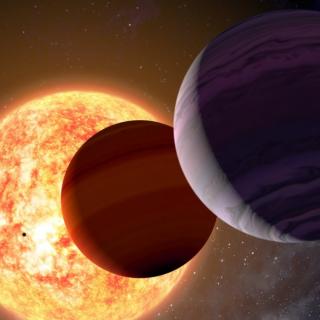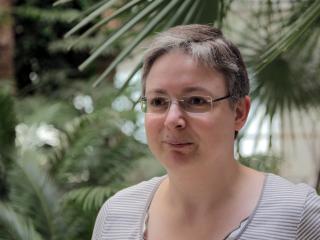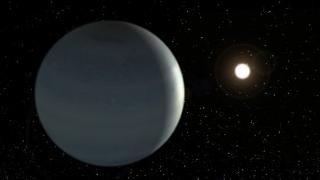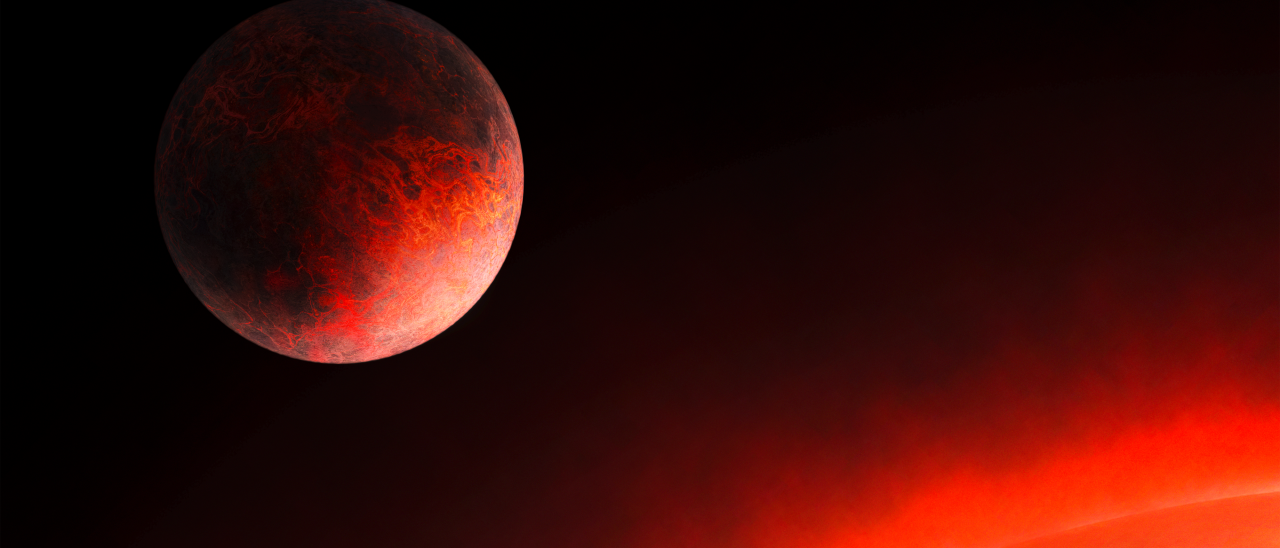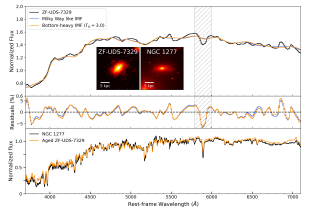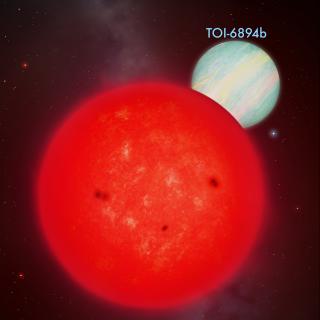An international team, including researchers from the Instituto de Astrofísica de Canarias (IAC), has discovered an extrasolar planet with half the mass of the Earth that takes approximately eight hours to orbit its parent star, a red dwarf just under 31 light-years from Earth. Called GJ 367 b, it is one of the lightest among the nearly 5.000 exoplanets known today. With a diameter of just over 9000 kilometres, this sub-Earth is slightly larger than Mars. The discovery not only demonstrates that it is possible to precisely determine the event the smallest, least massive exoplanets, but also provides a key to understanding how terrestrial planets form and evolve. The study was published today in the journal Science.
A quarter of a century after the first discovery of an extrasolar planet, the focus has shifted to characterising these planets more precisely, in addition to making new discoveries. At present, it is possible to construct a much more precise profile for most known exoplanets. Many exoplanets were discovered using the transit method – the measurement of minute differences in the emitted light, or its apparent magnitude, of a star as a planet passes in front of it (with respect to the observer). GJ 367 b was also discovered using this method, with the help of NASA’s Transiting Exoplanet Survey Satellite (TESS).
With an orbital period of only one-third of an Earth day, GJ 367 b is a fast mover. “From the precise determination of its radius and mass, GJ 367b is classified as a rocky planet,” reports Kristine Lam from the Institute of Planetary Research at the German Aerospace Center (Deutsches Zentrum für Luft- und Raumfahrt; DLR). “This places it among the sub-Earth sized terrestrial planets and brings research one step forward in the search for a ‘second Earth’.”
GJ 367 b belongs to the ‘ultra-short period’ (USP) group of exoplanets that orbit their star in less than 24 hours. “We already know a few of these, but their origins are currently unknown,” says Savita Mathur, a researcher at the IAC and co-author of the article. Moreover, with a rotation period of 48 days for the star, "it is a very interesting system to study and understand the dynamical evolution of small rocky planets with this orbit," explains the researcher.
Following the discovery of this planet using TESS and the transit method, the spectrum of its star was then studied from the ground using the radial velocity method. This technique consists of measuring changes in the position and velocity of a star as it and a surrounding planet orbit their common centre of mass. The variation caused by the gravitational force of the two objects is reflected in a shift in the spectrum of the observed star. In the case of GJ 367 b, the mass was determined using the HARPS instrument on the European Southern Observatory’s 3.6m telescope.
With the meticulous study and combination of different evaluation methods, the radius and mass of the planet were accurately determined: its radius is 72 percent of Earth’s radius, and its mass 55 percent of Earth’s mass.By determining its radius and mass with an accuracy of 7 and 14 percent respectively, the researchers were also able to draw conclusions about the exoplanet’s inner structure. It is a low-mass rocky planet, but has a higher density than the Earth.
“The high density indicates the planet is dominated by an iron core,” explains Szilárd Csizmadia co-author of the article from the DLR. “These properties are similar to those of Mercury, with its disproportionately large iron and nickel core that differentiates it from other terrestrial bodies in the Solar System.”
However, the planet’s proximity to its star means it is exposed to an extreme high level of radiation, more than 500 times stronger than what the Earth experiences. "The surface temperature could reach up to 1500 degrees Celsius – a temperature at which all rocks and metals would be melted. GJ 367 b therefore cannot be considered a ‘second Earth’" notes Enric Pallé, a researcher at the IAC who has also participated in the study.
The parent star of this newly discovered exoplanet, a red dwarf called GJ 367, is only about half the size of the Sun. This was beneficial for its discovery as the transit signal of the orbiting planet is particularly significant. "Red dwarfs are not only smaller, but also cooler than the Sun. This makes their associated planets easier to find and characterise", says Felipe Murgas co-author of the article from the IAC.
Red dwarfsare among the most common stellar objects in our cosmic neighbourhood and are therefore suitable targets for exoplanet research. Researchers estimate that these red dwarfs, also known as ‘class M stars’, are orbited by an average of two to three planets, each of which is at most four times the size of Earth.
Artícle: Kristine W. F. Lam et al.: "GJ 367b: A dense ultra-short period sub-Earth planet transiting a nearby red dwarf star". Science. Nov. 2021. DOI: 10.1126/science.aay3253
Contact at the IAC:
Enric Pallé, epalle [at] iac.es
Felipe Murgas, fmurgas [at] iac.es (fmurgas[at]iac[dot]es)
Savita Mathur, smathur [at] iac.es (smathur[at]iac[dot]es)


